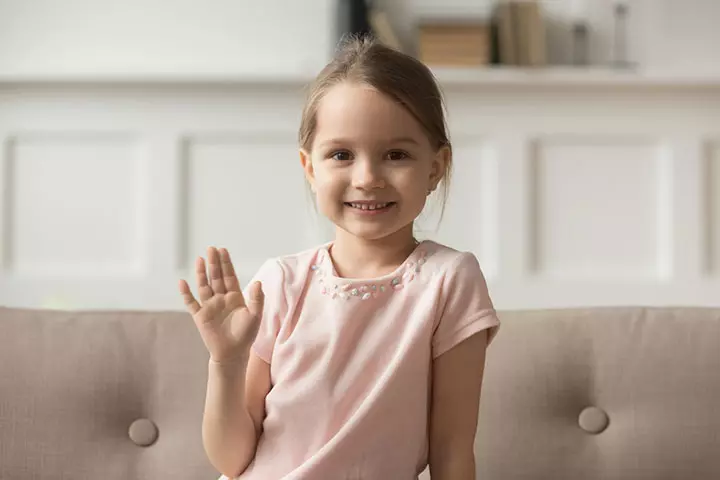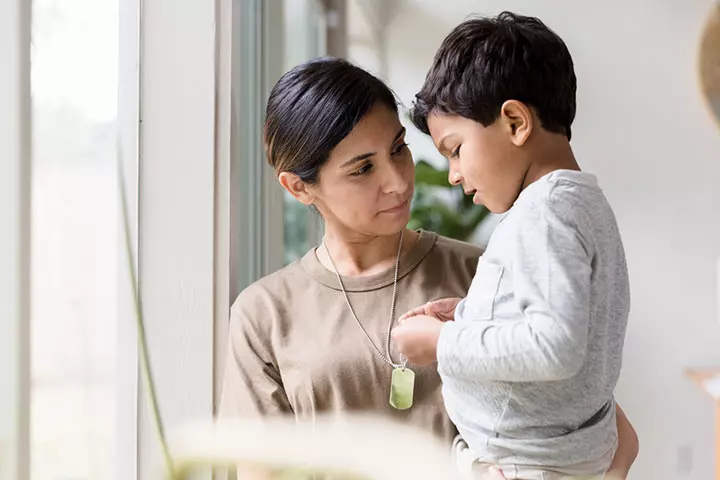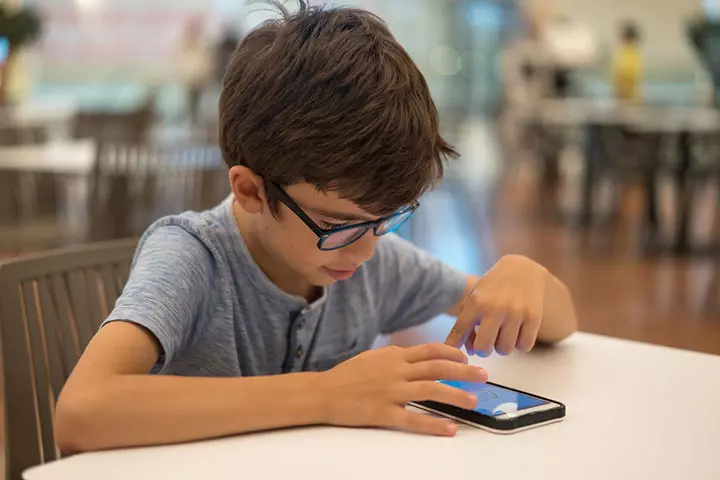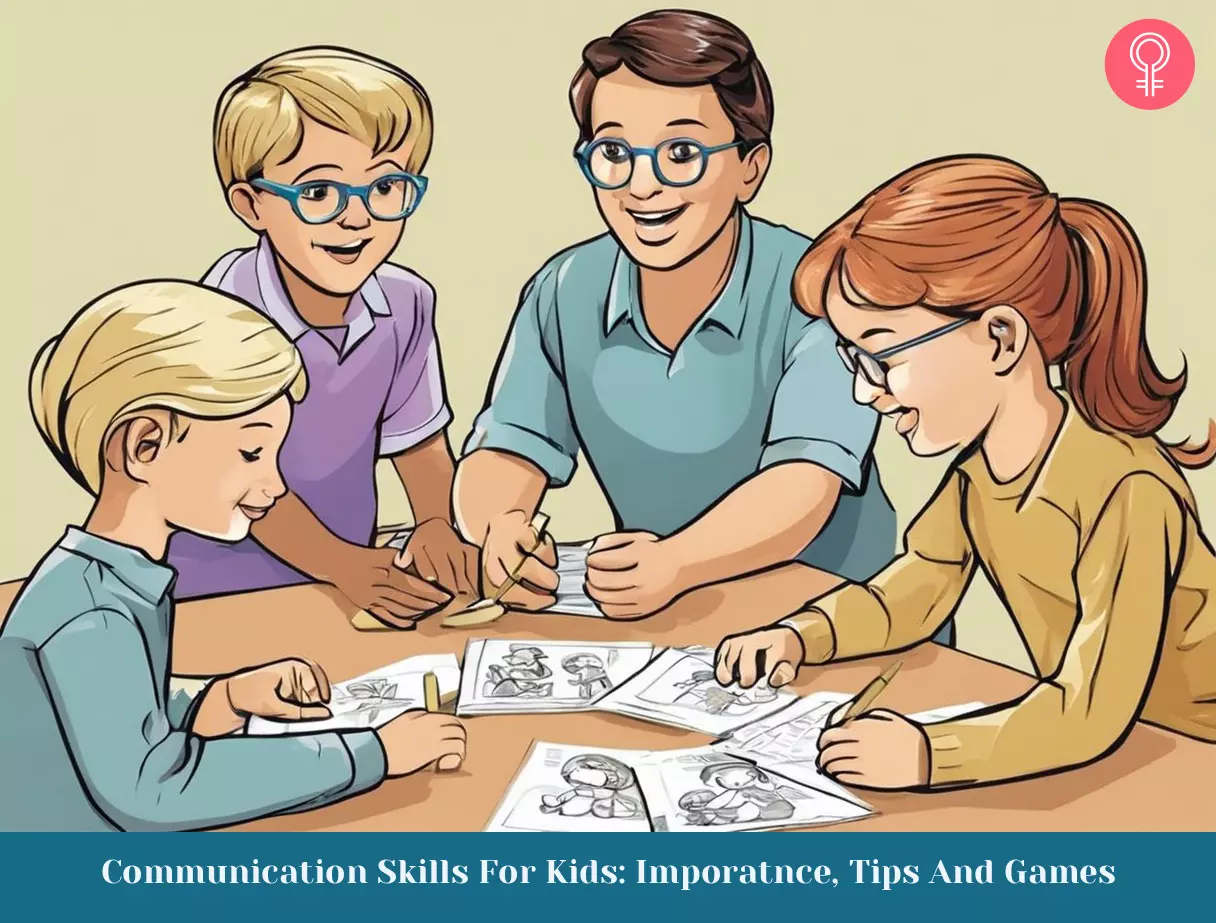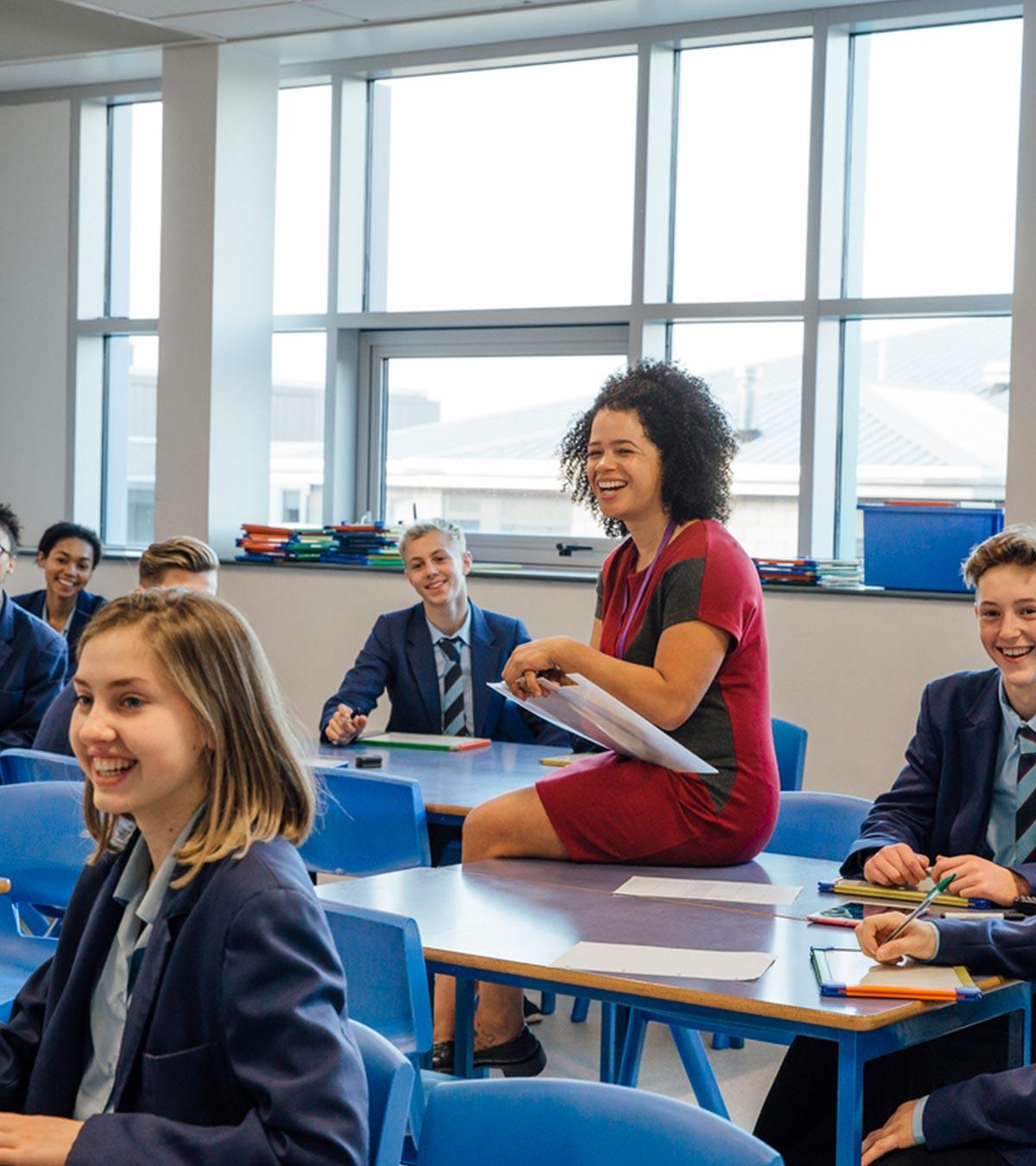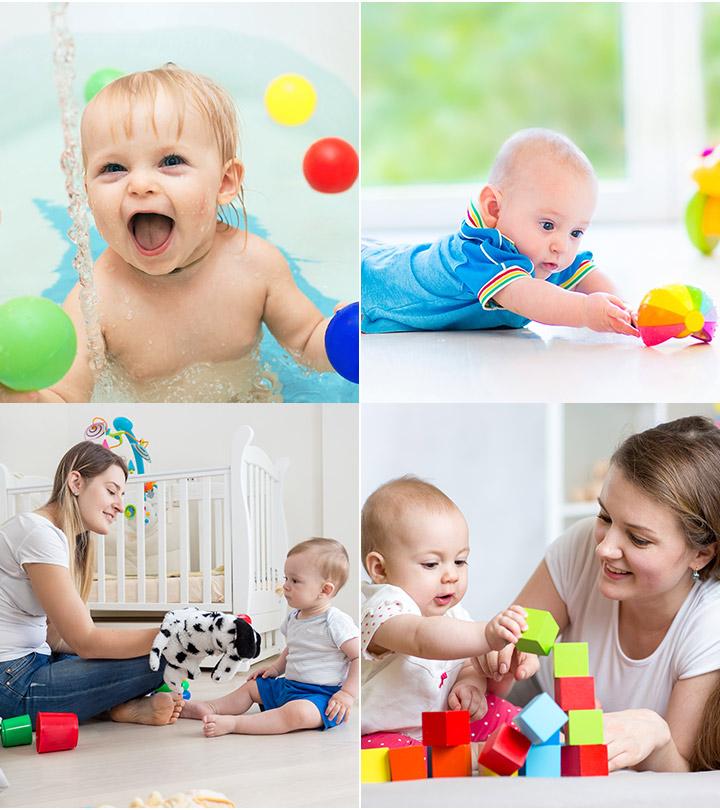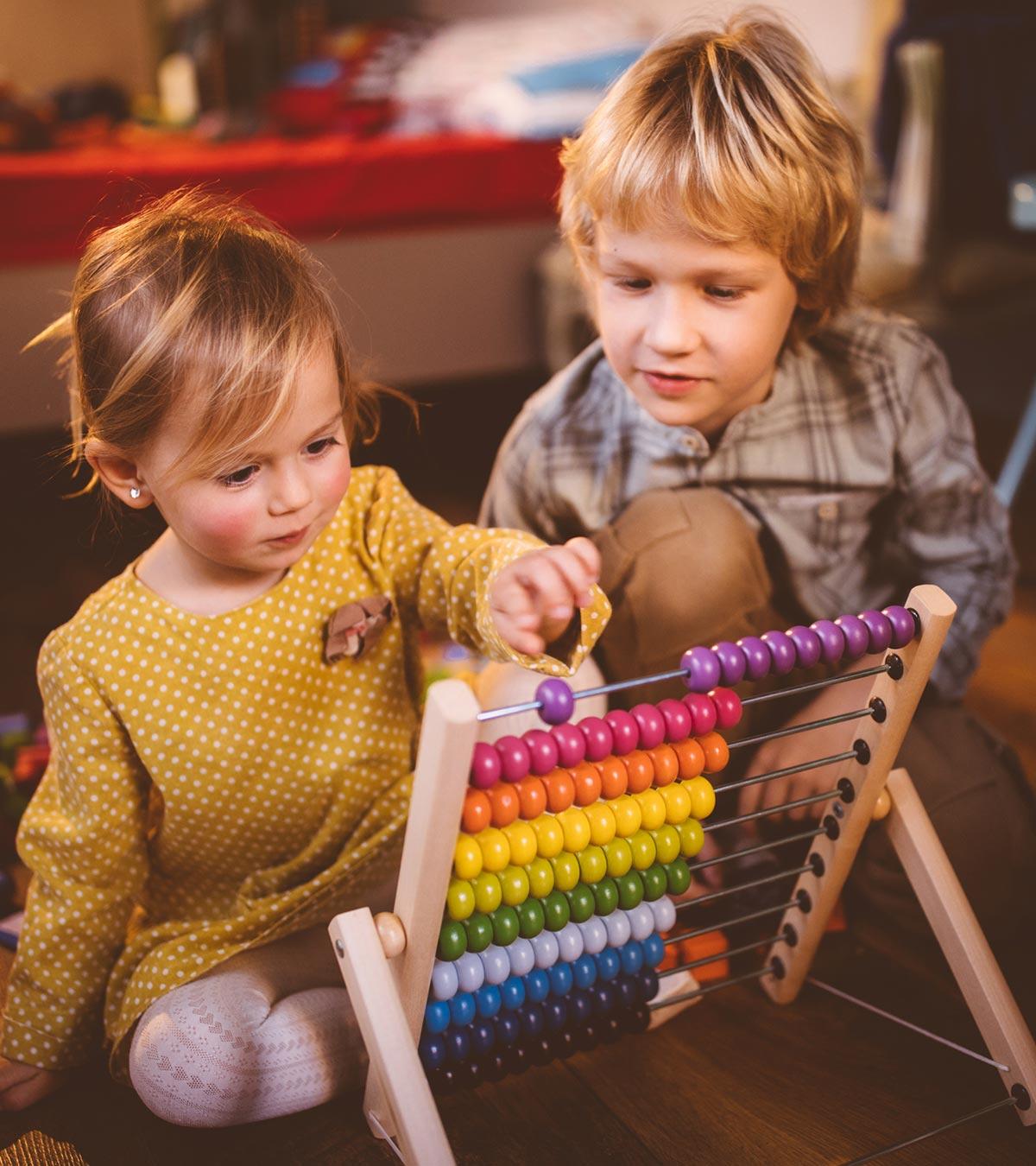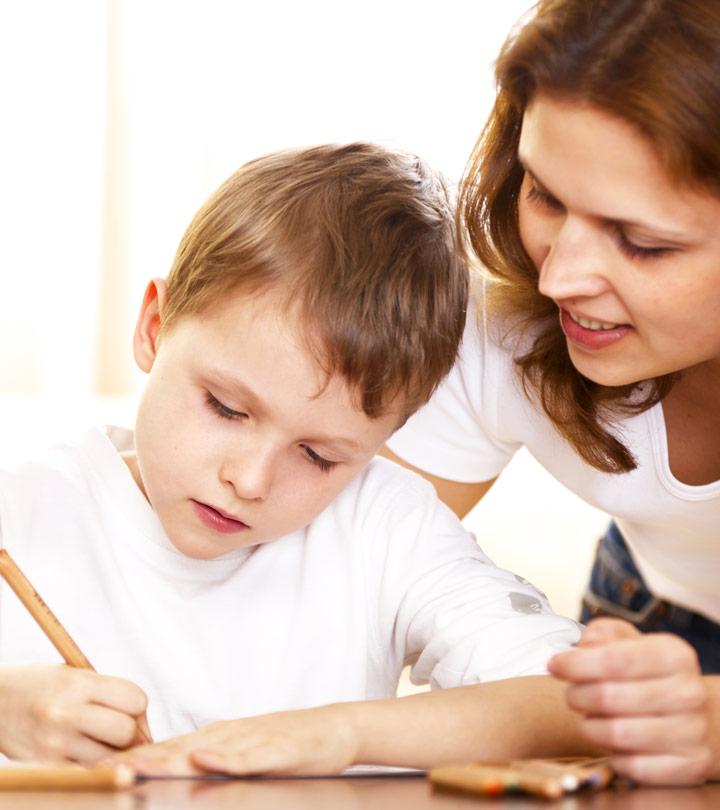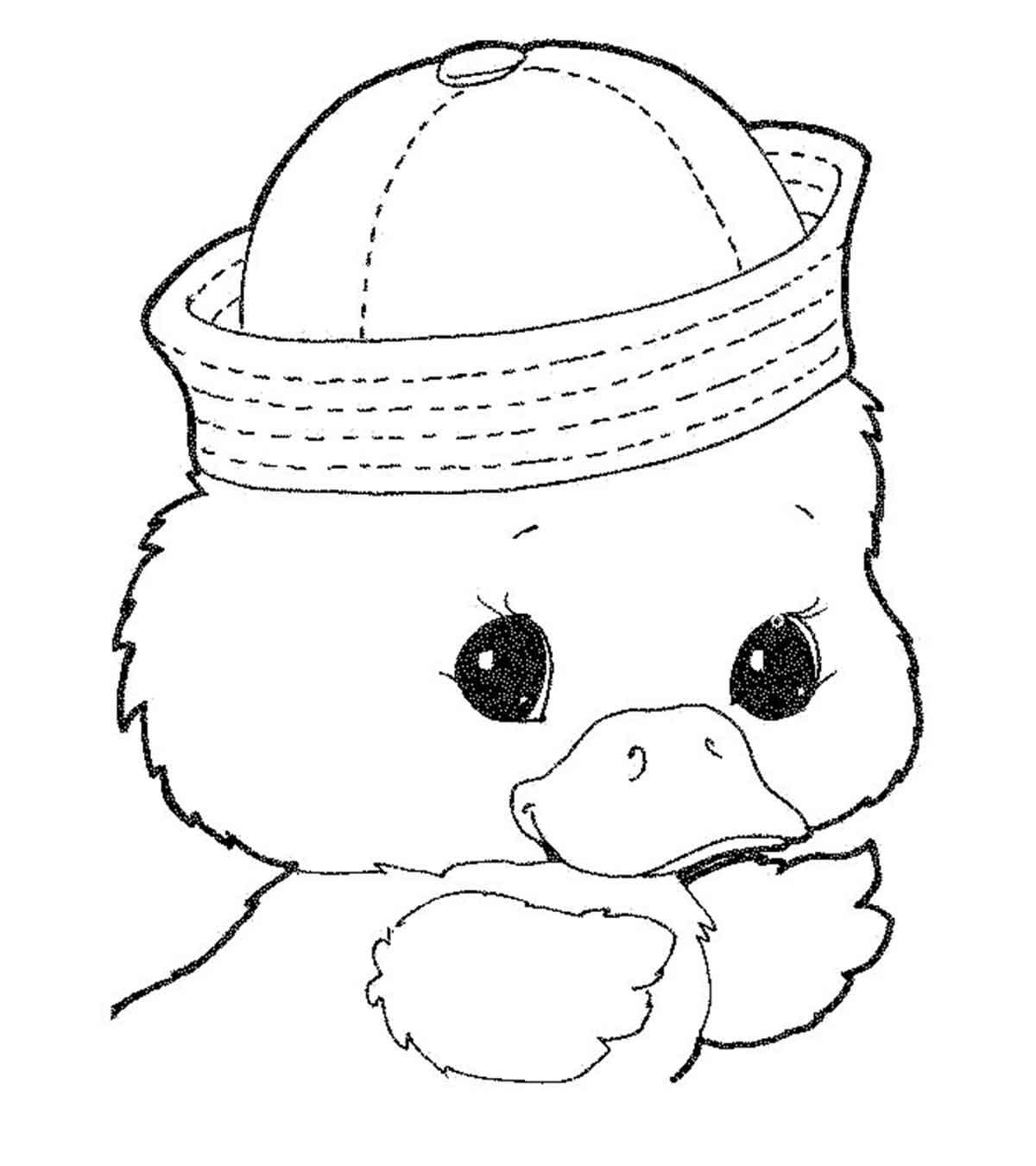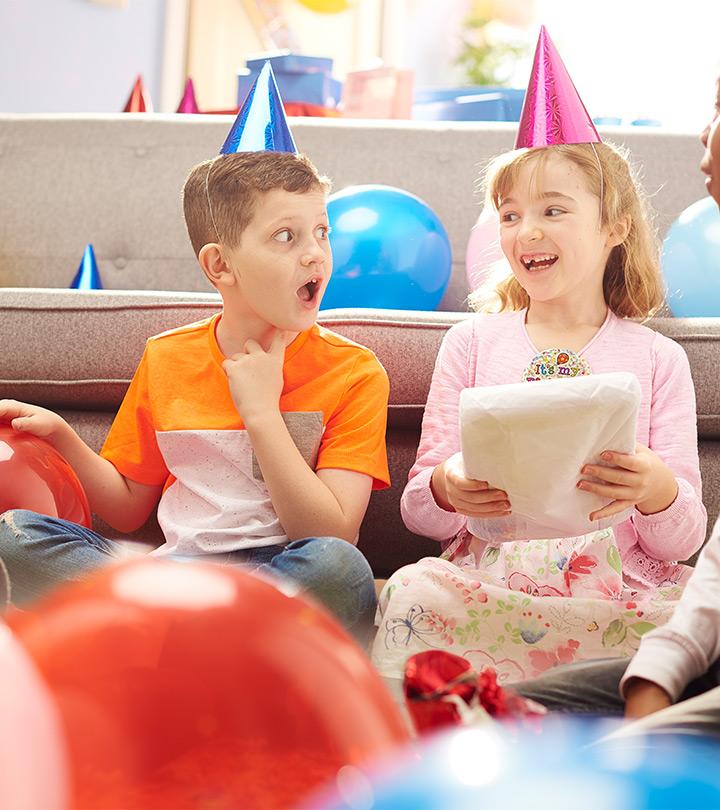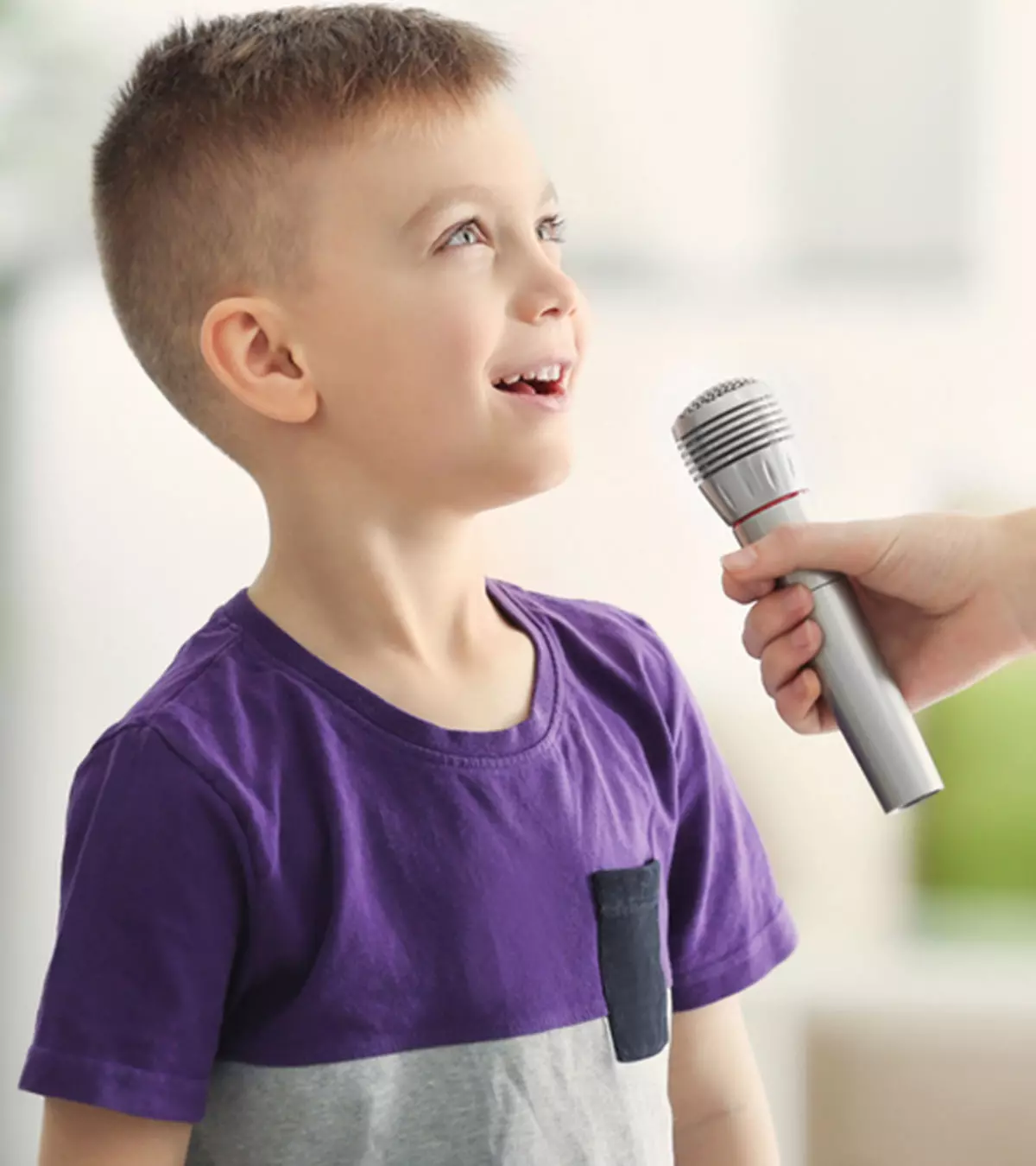
Image: Shutterstock
Communication works for those who work at it. – John Powell
Communication skills for kids can have a significant influence on their personalities. According to psychological studies, parents, families, and educators need to be sensitive to children’s communication abilities during their early childhood years (1). As a result, parental involvement in their children’s communication development is critical.
In this post, we share some tips and tricks on improving a child’s communication abilities with the help of fun-filled and interactive techniques. But before that, we will tell you about the importance of communication skills for kids, the essential skills they need, and tips to improve communication.
Importance Of Communication Skills For Children
Effective communication skills are as important for children as they are for adults. Yet, for children, the importance of these skills is preeminent because of the following reasons.
- Helps them express their ideas, feelings, and thoughts with clarity.
- Facilitates articulation and better learning. This is an important achievement for your child to excel in academics where learning and meaningful exchange of information is pivotal.
- Promotes consequential exchange of information or feedback with others, a step necessary for the development of interpersonal skills.
- Develops your child’s social skills (social IQ). Social interaction skills are important to develop strong relationships personally and professionally.
- Boosts confidence and self-esteem.
- Helps develop collaboration, teamwork, and negotiation skills essential for effective conflict resolution and leadership.
Good communication skills are also needed to sustain in the intense competition of the world once the child becomes independent.
Basic Communication Skills For A Child
Image: IStock
Here are some of the basic communication skills that are necessary for a child.
- Initiate or enter a conversation with polite enthusiasm. The child can practice this communication habit by greeting people before initiating a conversation. A warm smile and polite tone can strike the right note. For example, when your child meets a guest, guide them to smile, and say, “Hello, how are you?” or “Hi, it’s been a long time since we met. Hope you are well!”The child should also be taught the importance of non-judgmental communication, assertiveness, and persuasion.
- Make eye contact with the listener. It reflects the child’s respect and interest in the conversation, thus letting the speaker know you are engaging in active listening. Conversely, looking away or yawning during a conversation indicates disinterest and is considered bad manners.
- Speak clear and try to be audible. It is necessary for the comfort of a listener. Besides, it indicates that the speaker is confident about what they are speaking. Make your child practice speaking with you and other family members to learn this skill through practice.
- Show empathy and accept differences. Understanding the value of empathy is important learning. It will help your child know that every individual is different, and he/she will have different perspectives. Acknowledging these differences can help in the development of proper communication skills.
- Never interrupt a conversation. If your child interrupts a conversation often, it is an early indicator of poor self-regulation. Make your child aware of the importance of listening by guiding them on the ways to practice it.
- Listen and respond appropriately. Patient listening helps gather information without lapses while responding appropriately shows how well the information is received. It is vital for communication to be effective.
 Quick tip
Quick tip- Complete the communication loop. Whether formal or informal, communication must have proper closure. Teach your child to never leave a conversation without reaching a closure. Doing so shows your interest and respect towards the conversation that happened. Here is how your child can know when the conversation has ended:
- It can indicate a closure of the conversation if the speaker says, “All right, then, do you have anything else to say or share?” or “It was nice talking to you!” or “I’m glad we got to catch up!”
- Watch non-verbal cues such as – checking their phone or watch, acting distracted, packing up their things, standing up when they were previously sitting, etc.
These communication skills are basic and can be attained with persistent efforts.
Tips To Support Your Child In Developing Effective Communication Skills
Image: IStock
As a parent, you could practice the following tips to help your child overcome communication issues (2). These useful tips could effectively help your child develop strong communication skills.
- Encourage your child to talk so that they can share their feelings, thoughts, and ideas. Make them feel that approaching you for communication is easy.
 Point to consider
Point to consider- Listen to your child, understand, and respond in a sensitive way. Address their feelings of anger, embarrassment, sadness, and fear with the same vigor as you would do when they share something good with you.
- Avoid interrupting your child when he/she is communicating because this is what you expect your child to do when you are talking. Thus, to teach them how to be a patient listener, you need to be a patient listener.
- Never be judgemental as there may be some issues that might look insignificant to you, but for your child, they might be grave.
- Stop being overly critical and do not try to correct all the communication problems at once.
- Focus on body language and tone. This is crucial to help understand what is not said. Children can be secretive about their issues, especially the ones that embarrass them.
- Provide them moral support and ensure that you have their back. Try to get involved with them in the issue and help them resolve it by setting the right examples.
Interacting with children could help them overcome social and communication issues. It will help them realize the value of productive conversation. However, if a child has chronic communication issues that seem difficult to manage, then consulting an expert is wise.
Why Do Children Struggle With Effective Communication?
Image: IStock
There could be various interrelated factors responsible for your child’s communication problems. However, some of the basic reasons could be:
- Absence of guidance: Learning and practicing effective communication skills needs hand-holding. Young children mostly learn by seeing their peers and families. Thus, be their role models and help them learn the art of communication. Oral language skills or oratory skills are best developed with regular interactions with each other. Thus, establish positive interactions with your child frequently. Do not forget that children mirror their parents a lot of the time, so it is important to communicate rightly.
- Increased screen time: Children in the age group of 8-18 years spend almost seven hours a day on screens. Experts consider it one of the reasons for poor communication development in children (3).
- Communication disorders: A communication disorder such as speech-sound disorder or social communication disorder could be one of the reasons affecting a child’s ability to communicate (4). A communication disorder may be developmental or physical. This issue can be managed with the help of an expert who would trace the root of the issue and then treat it accordingly.
Smrithy Rajesh, a mother, shares her experience helping her autistic son develop his communication skills. She got him enrolled in a special class as well. She writes, “I created two picture cards of his favorite food and stuck them in front of my kitchen wall. In the beginning I was giving him hand to hand prompt to pick up cards and hand them over to me (or another communication partner). I would hide his favorite food items to use the cards effectively. Within a week, he started using those two cards independently for communicating.
“Then I introduced other pictures like Milk, Juice, Music…one by one. When he started communicating with all the pictures from the strip, I fixed them in a big file in different pages. I was using his own pictures for making cards. In the left side of the file, I attached an ‘I want’ strip. Again, I taught him to pick the picture and use it with ‘I want’ strip. At that time, I was using only ten pictures. After a month, he started communicating using ‘I want’ strip (i).”
Some other relevant reasons that could affect a child’s communication skills are hearing problems, stuttering, and unclear speech. In such cases, professional advice and guidance are required.
Communication Games And Activities For Kids
Image: IStock
Communication games for children are age-specific activities aimed at developing efficacious verbal, nonverbal, and visual skills. Regular practice of these games could help you develop good conversation skills in your child. Here is a list of games that you may consider trying.
1. The telephone game
This is one of the common group games that may help develop good listening skills in children. This game is fun with a group of seven to eight people. Here is how you play the game.
- All the players sit in a circle close enough to whisper in the other player’s ear.
- As the game begins, one child/individual whispers a message to the player beside him/her.
- The same message should be passed by the other player to the player sitting next to them.
- The process will continue until all the players in the circle are done whispering to their next player.
- Once the message reaches the last player, ask him/her to say it aloud. It will be fun to hear what they say.
Start the game with a simple sentence. Once the children understand the game, use more complex sentences.
2. Pointing directions
This is a fine activity to hone your child’s nonverbal communication skills, such as written communication. The game will help your child understand that successful navigation is possible only when the communication is accurate and precise. In this activity:
- Instruct your child to jot down the directions to a nearby mall or shop.
- Commence a journey with your child following those directions to reach the place.
- On your way, help your child understand how he/she could improve her communication by writing clear and concise instructions. For example, you could guide them on marking landmarks to easily find the way, or mark lane numbers while mentioning left or right turns.
3. Point and tell
This interactive fun-activity may help sharpen your child’s verbal communication skills. In the game, you have to give a random object to your child on which they have to speak five to six lines.
The object could be anything basic, like his/her favorite dress, his/her lunchbox, or a raincoat. While talking on the topic, your child will express feelings/thoughts that boost their confidence and enhance their vocabulary, diction, and fluency. This activity also helps in practicing the correct pronunciation of words.
4. Picture storytelling
Children love to listen to stories, and now it is their turn to narrate one. Picture storytelling is an interesting activity wherein your child has to narrate a story based on pictures provided to him/her.
This activity helps your child process visual cues and then use the interpreted information to speak. To do so, the child has to arrange the pictures in an order/logical sequence in which he/she wants to narrate the story. Doing this activity helps your child develop their creative communication skills.
5. Presentation
It is just like your PowerPoint presentations. Ask your child to prepare a crisp presentation on paper or on PowerPoint on a topic. Tell them the audience to which the topic will be presented, and then you may let them choose the topic from a number of ideas like recycling, saving water, controlling pollution, using plastic bags, etc. It will enhance your child’s oratory skills and boost their confidence to speak in public.
6. Impromptu
Impromptu or unrehearsed speech practice is an ideal method to sharpen your child’s public speaking skills, especially impromptu. To play, make chits on some interesting and fun topics and ask your child to pick one chit and give a speech on it for two to three minutes.
Since the activity is impromptu, your child will get hands-on experience in thinking, articulating, and presenting his/her ideas/thoughts/information with accuracy. To increase the complexity of the game, you may set a time limit for speaking. Overall, this activity could be used as an effective tool for language development.
7. Emotional charades
Image: IStock
This game involves a combination of communication types to develop comprehension and presentation skills. It will also help your child fine-tune their communication abilities using facial expressions.
To play, take a few chits and write emotional scenarios on them. The scenarios should be light and age-specific, like losing your pencil-box, losing your favorite dress, waiting for the school bus, or sneaking into your friend’s bag. Each child gets a scenario and acting while speaking is not allowed.
After the scenario is guessed, discuss the emotional response. This will help children to express their feelings verbally pertaining to a specific situation. If your child is not able to correctly identify most of the emotions, visit a pediatric psychiatrist/psychologist.
8. ‘Guess what I am thinking of’
This game begins with all players sitting in a circle. At the center of the circle sits a player who is called a “thinker.” The thinker starts the game by saying that I am thinking of a thing (or someone), which (or who) is an animal (or person/thing/place/plant/food/occupation). Now, other children have to try and identify what it is that the thinker is thinking, by asking questions. However, the thinker can respond only with a “Yes” or a “No.” If no one guesses the answer, then the thinker is declared the winner.
9. Identify the described
This game is a fun way to enhance your child’s comprehension and interpretation skills. To play, you would need about four to five children. Blindfold one child while giving an object to the rest.
Now all the children, except the one who has been blindfolded, will describe a characteristic of the item, in turns. The blindfolded child has to guess the item by understanding the verbal description. If needed, the blindfolded child may request for more clues by asking questions.
10. Trolley challenge
This super fun activity keeps your child amused while fine-tuning their communication skills as you go around the supermarket. In the game, every time you pick an item, ask your child to tell three things about it. For example, if you pick a water bottle, the child might say – it is a plastic bottle with a transparent base and a blue cap. This activity is a good way to develop diction, which is an important part of oral communication.
11. Changing the leader
Changing the leader is a delightful game for kids that combines enjoyment with valuable lessons in non-verbal communication. To play, form a circle to ensure a safe and open space. Designate the initial leader through a fun game or random selection. The chosen leader begins with a simple action, and the others copy them. The fun twist lies in non-verbal leadership transfer – the leader silently designates the next through gestures like a wink or nod. The child receiving the signal becomes the new leader, changing the action at will. This activity will encourage creativity in children and as each child takes turns leading, you will see the the transition becoming more seamless. Children will learn to pay attention to non-verbal cues, fostering adaptability and cooperation.
Frequently Asked Questions
1. What are the 7 C’s of communication?
The seven C’s of communication are correctness, clarity, concreteness, courtesy, completeness, consideration, and conciseness.
2. What are the effects of poor communication skills?
The common problems that can arise due to poor communication skills are misunderstandings, conflicts, lack of trust, reduced confidence, and time management issues. However, with support from parents and teachers, any kid can overcome communication issues and lead a life of happiness and confidence.
3. How can technology impact a child’s communication development?
Speed and language development depend on verbal interaction. Children communicate by talking to others, reading, and singing. When they spend excessive time on technology devices, they miss the opportunity to interact with real people. As a result, it negatively affects their language development.
4. How do children learn to communicate?
A child learns to communicate by exploring their environment. They see, hear, or listen to others around them talking and learn how to speak. Apart from observing people, children also develop their communication skills by taking turns in games, talking, and saying things again. Listening, speaking, gesturing, reading, and writing are key elements of communication development that continue throughout life (5).
The benefits of good communication skills for kids are numerous since it allows them to express their feelings and learn more effectively. As a parent, you can personally guide and encourage your child to practice their interpersonal skills daily. You can also involve your children in communication activities such as the telephone game, picture storytelling, and impromptu. These games will teach them the principles of communication in a fun way. Also, try not to be harsh or judgmental toward your children. Instead, encourage them and respond to them sensitively. Further, if you notice any developmental issues, don’t hesitate to consult a professional.
Infographic: Tips To Support Your Child In Developing Communication Skills
Some children are naturally expressive, while others struggle to connect with people and communicate. If you have noticed your child often withdrawing from conversations and suppressing their emotions, help them open up and develop better communication skills. Make them read this infographic, so they learn to make friends and have stable mental health. Illustration: Momjunction Design Team
Key Pointers
- Communication skills are vital for children’s personal and professional growth, and parents play a crucial role in developing them.
- Basic communication skills include polite conversation initiation, eye contact, clear speaking, empathy, and appropriate listening and responding.
- Factors that can impact a child’s communication skills are lack of guidance, excessive screen time, and communication disorders.
- Communication games and activities, such as telephone games, picture storytelling, and impromptu, can be enjoyable ways to enhance communication skills.
- Parents must encourage and respond sensitively to their children and seek professional help when needed.
Image: Stable Diffusion/MomJunction Design Team
Enhance English listening and speaking skills in kids with this engaging video. Explore diverse topics through interactive conversations, making language learning enjoyable and effective.
Personal Experience: Source
MomJunction articles include first-hand experiences to provide you with better insights through real-life narratives. Here are the sources of personal accounts referenced in this article.
i. How I developed communication skills in my son- Advaith;https://smrithyrajesh.blogspot.com/2017/05/how-i-developed-communication-skills-in.html
References
- Caroline Gooden and Jacqui Kearns; The Importance of Communication Skills in Young Children; Institute of Educational Sciences
https://files.eric.ed.gov/fulltext/ED574738.pdf - Communicating well with children: tips; Raising Children
https://raisingchildren.net.au/toddlers/connecting-communicating/communicating/communicating-well-with-children - Screen Time May Affect Social Interaction Skills in Children; Winchester Hospital
https://winchesterhospital.org/health-library/article?id=907792 - Communication Disorders; St. Louis Children’s
https://www.stlouischildrens.org/conditions-treatments/communication-disorders - Developing Communication Abilities; NCIP Library
https://www2.edc.org/ncip/library/ec/power_7.htm#:~:text=Children%20develop%20these%20more%20adult,and%20talking%2C%20and%20by%20practicing.





